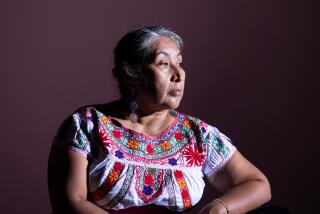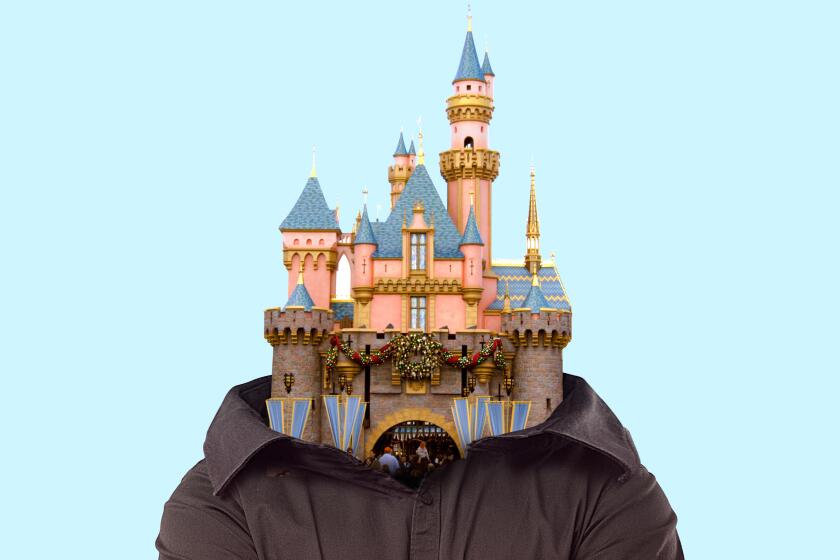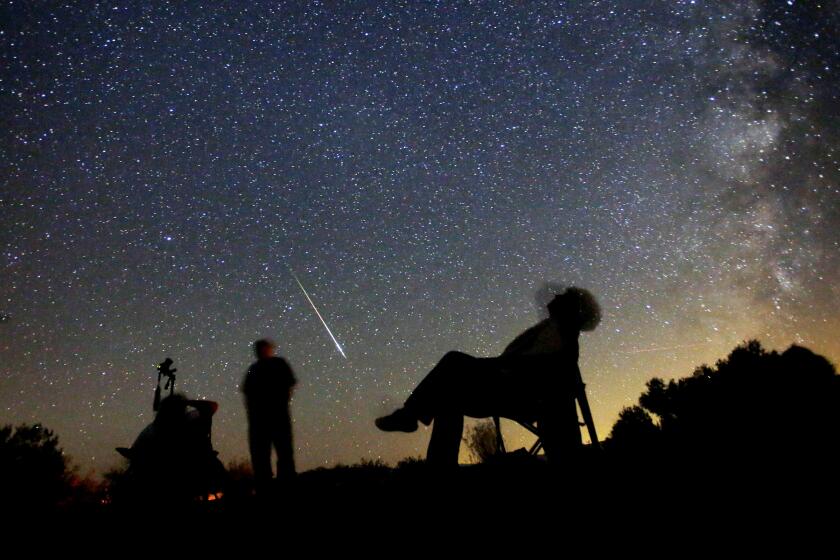The Price of Success : Even as Santa Monica Basks in Prosperity, Some Worry About Losing Its Humanity
The former mayor of Santa Monica steps out of a restaurant and into an urban planner’s storybook. Fountains burble, strollers smile and chat beside umbrella-fronted bistros. Jacaranda trees bloom along the Third Street Promenade in an almost impossible spring brilliance.
It is a scene that Dennis Zane helped make real. The longhaired, onetime Vietnam War protester and political force in this booming city breaths it all in, and pauses.
To worry.
Santa Monica, the city that once fed vagrants on the front lawn of City Hall, now proudly welcomes droves of tourists to its colorful Promenade, its swank hotels and its newly refurbished parks. Developers propose cutting-edge projects; business owners boast of bountiful receipts.
The city is making money hand over fist while puzzling, as only it could, over how to preserve its humanitarian soul.
“There is a lot of pride I feel in what we have done,” says Zane, leader of Santa Monica’s most powerful political group, Santa Monicans for Renters Rights. “But what we are really talking about is the dilemma of success. There are always new problems to be solved.”
Only in Santa Monica could leaders feel this much conflict about the sweet smell of prosperity: They agree to build a roller coaster, then tell the world how small and slow it will be. They welcome the Olympic torch relay, but only after a debate over the creeping hegemony of a corporate sponsor. They pledge to curtail programs for the homeless, but end up potentially doubling the funding.
Ambivalence, however, is not stopping progress. A new amusement park will open Saturday on the once damaged and downtrodden pier. Another luxury hotel will probably join two others on the waterfront. Plans have been drawn for a new movie studio two miles inland, where the workaholic auteur might live in a loft right above his state-of-the-art special effects equipment.
Zane marvels at the cosmopolitan flair given voice in the many languages that tourists are speaking along the Promenade, the flourishing outdoor mall that has become a regional destination point and a national model for downtown revitalization.
“That whole multicultural element is just wonderful. I love it,” Zane says. Pausing, he adds: “But I do regret that we have not created as much of a local focus, for our own residents, as we still can.”
Such equivocal, nuanced policy musings hardly fit the broad caricatures drawn of this city of 86,905 over the last two decades.
*
Since the advent of one of the nation’s toughest rent control laws in 1979 and the subsequent ascendancy to the City Council of the liberal members of Santa Monicans for Renters Rights, the city has been portrayed as “the People’s Republic of Santa Monica.” It was the place where some felt landlords and business people were bludgeoned by political zealots, who found their spiritual models in Jane Fonda and Tom Hayden, now the state senator for the area.
Today, Santa Monica engages in a much more subtle dance, taking an occasional spin with the captains of development, but promising the bulk of its dance card to its more traditional, middle-class citizens.
When the Pacific Park amusement center opens on the Santa Monica Pier Saturday, the city’s mothers and fathers take their latest stab at balancing those agendas.
On its surface, the 11-ride attraction by a private developer is an attempt to restore life to a landmark that had sputtered into disrepair. But city leaders also worry that the estimated 1 million additional annual visitors could worsen the traffic snarls and crime problems that critics have bemoaned for years.
And thus, City Hall has embarked on an almost comical campaign to create a buzz about the amusement park, but not too much buzz.
“We prefer not to say this is a change at the pier. We prefer to say this is an evolution, to restore some of the community feel that we have always had in Santa Monica,” says Jeff Mathieu, the city’s director of resource management, who sounds a bit like Mr. Rogers as he soft sells Pacific Park.
City officials are fond of calling the park’s roller coaster “wimpy” and “low-key.” They insist Pacific Park will appeal mainly to children and families, not roving crowds of unruly teenagers. They hope to create a more sedate, egalitarian, mix by charging no admission, but up to $4 per ride.
The pier is a crucial pivot point for the city because it lies in what had once been a relative economic dead zone, between the Promenade and the boutique charms of Main Street.
Now, the pier may soon be joined by another luxury hotel on Ocean Avenue to help link the city’s two commercial centers in one continuous shopping, dining and tourism hub. Maguire Thomas Partners hopes to begin construction on the 175-room hotel next spring, placing the structure between the tony and highly successful Loews Santa Monica Beach Hotel and Shutters on the Beach hotel.
Seven years after winning approval for the hotel--just ahead of a city voter-approved moratorium on beachfront hotels--the developer said financing and market conditions are finally ripe to begin construction. The new addition could produce another $1.6 million a year in hotel bed taxes for the city, which has already seen those taxes grow by 71% to $10.7 million over the last five years.
Some renters rights group members still complain about the maneuvering by Maguire Thomas to win approval of the hotel, just before the 1990 vote. Still, others say they can stomach the addition of the luxury hotel if the developer also succeeds with its plan to buy and rebuild the historic Sea Castle apartment building.
The Sea Castle, an Art Deco masterpiece, is adjacent to the hotel site, but is under the wrecker’s ball because of severe damage from the 1994 earthquake and a subsequent fire.
“This is going to be a wonderful thing, to have affordable units right at the beach for people,” said Councilwoman Judy Abdo, a renters rights group member, noting that one-quarter of the 178 apartments could have subsidized rents.
*
While those changes are the most noticeable along the high-profile coast, another economic boomlet is taking shape in the city’s eastern reaches. Entertainment firms are congregating in what was once a warehouse district. Leading the pack are MGM’s 700-employee headquarters and Sony Music Entertainment.
Now a locally grown company called Santa Monica Studios wants to play off that creative axis by building a 393,000-square-foot combination of sound stages and production facilities along Olympic Boulevard.
The project must first face an environmental review, with the potential for excessive traffic one concern. Some neighborhood activists complain that the City Council is too eager to move forward with such projects.
“Fine, now we have built a really strong tax base with all this development,” says Kelly Olsen, a former council member, who has not studied the studio proposal. “But now let’s shift the emphasis back now to the residents and to what their concerns are.”
There is a growing feeling, even among renters rights group members, that development can provide an economic engine for other progressive programs. At a time when the income of most other municipalities has been flat, Santa Monica’s tax receipts have jumped 21%. And it has earned a Triple-A bond rating, one of just two cities in the state to do so.
That cash has allowed Santa Monica to continue its tradition of programs like curbside recycling, which it helped to pioneer. It will soon help build a first of its kind treatment plant near the pier to clean pollution-fouled storm drain runoff before it reaches the ocean. It has the first program in the state, and one of the few in the nation, that places signs on store shelves telling consumers how to handle toxic products.
But for some, even this seemingly socially conscious agenda isn’t enough, and homelessness remains the lightning rod issue they use to prove their point. People like Moira LaMountain, a volunteer for a group called Helping Other People Eat, lament that the city no longer cares for the homeless with the pious fervor of the 1980s.
In 1994, the City Council preempted a citizen backlash against homeless camps in parks and other public spaces with a policy that attempts to funnel the rootless poor into housing, jobs and counseling, rather than simple soup lines.
“The city is serving one group and abandoning the rest of the human race,” says LaMountain, while taking a break from dishing out rice and beans on the chow line in Palisades Park. “There are 325 shelter beds in Santa Monica and 1,400 homeless people. The rest are just discarded.”
Vivian Rothstein, the executive director of the city’s largest social service agency, sees the policy shift on the homeless in more benevolent terms, calling it “a natural evolution.”
“It’s been 13 or 14 years since this crisis began and a lot of the public and the funders are tired of this problem,” said Rothstein, who heads the Ocean Park Community Center. “They want these people to get off the street and get out of their face. . . . They want placements, outcomes.”
*
While the city funded just 72 shelter beds six years ago, it now has 319. Despite a pledge to hold the line, or lessen expenditures, spending on the homeless continues to climb, from $1.1 million two years ago to $1.6 million this year. And in the coming year, the budget could grow by another half million dollars, because of a federal grant to house the homeless.
The debate over those growing expenditures is likely to be fierce, particularly given the council’s earlier pledge to rein in its homeless spending.
But some peace has come to the community, which generally agrees that there are fewer transients living in parks and on sidewalks.
Mayor Paul Rosenstein rejects the critics who would paint the city as either Soviet Monica or its evil, reactionary twin.
“People like to puncture myths and enjoy poking fun at Santa Monica,” says Rosenstein. “I find the reality is really quite simple: This is a community that respects itself and struggles to do the right thing--to provide the best quality of life it can in a difficult urban environment.”
(BEGIN TEXT OF INFOBOX / INFOGRAPHIC)
Santa Monica’s Gold Coast
Santa Monica is in the midst of a building boom, with much of the development along its waterfront. Farther inland, entertainment firms are setting up shop.
1. Santa Monica Pier: Revitalization will include a two-acre amusement park with a roller coaster that runs on 1,300 feet of track and an 85-foot-high Ferris wheel.
2. Sea Castle Apartments: This 178-unit structure is being torn down earthquake and fire damage. Developer Maguire Thomas Partners plans to rebuild it as an upscale complex with some “affordable housing” units.
3. Luxury hotel: Maguire Thomas also plans a 175-room luxury hotel on 68,000 square feet of “affordable housing” units.
4. Santa Monica Studios: Plans call for a state-of-the-art studio and production facility of more than 390,000 square feet on 6.5 acres near the city’s east boundary.
More to Read
Sign up for The Wild
We’ll help you find the best places to hike, bike and run, as well as the perfect silent spots for meditation and yoga.
You may occasionally receive promotional content from the Los Angeles Times.







